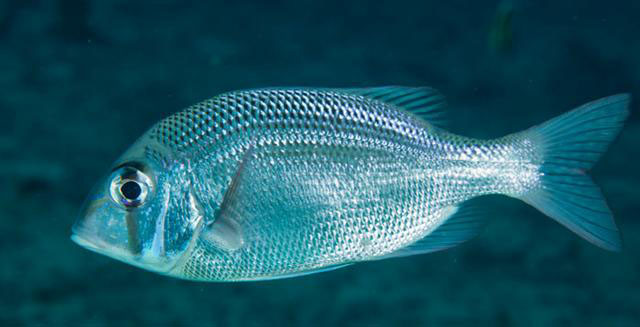| Lethrinidae (Emperors or scavengers), subfamily: Monotaxinae |
| 45 cm TL (male/unsexed) |
|
reef-associated; marine; depth range 15 - 50 m, non-migratory |
| Indo-West Pacific: known only from southern Japan, the South China Sea, the Marshall Islands, and off Phuket, Thailand in the Andaman Sea. |
|
Dorsal spines (total): 10-10; Dorsal soft rays (total): 9-10; Anal spines: 3-3; Anal soft rays: 9-10. Description: Eye is large, its diameter about equal to the width of preorbital and interorbital spaces. The mouth is relatively small. The posterior part of the jaws reaches to about the level of the nostril openings. Overall color is silvery to brownish. Scale borders have a narrow brown border. Numerous vertically elongate blue spots are on the snout and cheek and sometimes on the operculum. Fins are clear to yellow or reddish, caudal fin sometimes dusky brown. Juveniles with a mostly vertical banded pattern (Ref. 48635). Body depth 2.5-3.0 in SL (Ref. 90102). |
| Found over sandy and rubble bottoms near rock and coral reefs. Solitary on sand slopes in clear coastal lagoon habitats (Ref. 48635). May be found in small groups (Ref. 90102). Feeds on small bottom-living invertebrates. Marketed fresh (Ref. 9775). |
|
Least Concern (LC); Date assessed: 09 March 2015 Ref. (130435)
|
| harmless |
|
Source and more info: www.fishbase.org. For personal, classroom, and other internal use only. Not for publication.

